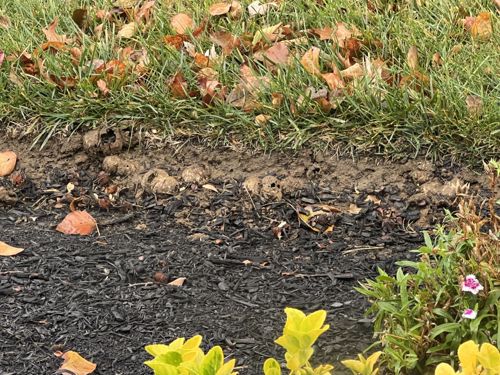Ants
Scientific Name: Formicidae
Order & Family: Hymenoptera, Formicidae
Size: Typically 2 to 25 mm (0.08 to 1 inch), depending on the species.

Natural Habitat
Ants are highly adaptable and can be found in almost all terrestrial habitats around the world. They build nests in soil, under rocks, in wood, and in decaying plant matter.
Diet & Feeding
Ants are omnivorous, consuming a wide range of foods including nectar, seeds, fungi, other insects (both living and dead), and honeydew produced by aphids. Their specific diet varies by species.
Behavior Patterns
Ants are social insects that live in structured colonies with a queen, workers, and sometimes soldiers. They exhibit complex behaviors such as foraging, caring for young, and defending the nest. They communicate using pheromones and touch. The images show what appear to be ant hills or disturbed soil from ant activity, often a sign of a colony nearby.
Risks & Benefits
Benefits: Ants play a crucial role in ecosystems as decomposers, aerating soil, dispersing seeds, and preying on other insects. Risks: Some species can be considered pests, invading homes in search of food or shelter, and a few species can deliver painful bites or stings.
Identified on: 11/21/2025